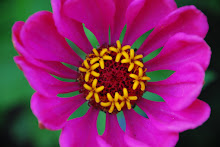Good morning gardeners!
Herbs gardening is one of my most beloved pursuits. Growing herbs for culinary, medicinal, and ornamental uses is fun and satisfying. I love studying the lore and history of herbs through time in different cultures. Herbs are multi-use plants that are mostly forgiving to neglect from the gardener.
April is an excellent time in Portland to plant perennial herbs and cool tolerant annual herbs such as cilantro, chervil, dill, and german chamomile. Please wait until the warmer weather of late May to plant hot-season annual herbs like basil. The night temperatures are too cold in April for basil.
In this post I've included an introduction to culinary herb gardening that is adapted from my garden report in the April 2016 edition of the Concordia News. Please also consider joining one of my culinary herb gardening workshops.
Enjoy and happy gardening! Jolie
AN INTRODUCTION TO CULINARY HERB GARDENING
Herbs have a variety of uses including culinary, medicinal and spiritual. Generally herbs are defined as any plant used for flavoring, food, medicine or perfume.
Culinary use typically distinguishes herbs from spices based on the part of the plant that is used. An herb refers to plants used for their green leafy parts-either fresh or dried. A spice is a culinary product from another part of the plant such as seeds, berries, bark, roots and fruits. Some plants are used both as herbs and spices, such as dill weed and dill seed or cilantro leaves and coriander seeds.
Many herbs are beautiful as ornamental plants in the garden. In addition to their fragrance, herbs have a wide variety of colors, textures and shapes to delight all the senses.
Growth habits of some common culinary herbs are:
➢ Evergreen woody perennials: bay laurel, lavender, rosemary, and lemon verbena
➢ Evergreen perennials: thyme
➢ Herbaceous perennials: bee balm, chives, fennel, lovage, mints, oregano, roman chamomile, sage, tarragon.
➢ Biennials: angelica and parsley
➢ Annuals: basil, chervil, cilantro, dill, and german chamomile
Most herbs prefer well-drained soil and need full sun, 6-8 hours/day. Direct sunlight is needed to achieve maximum flavor and fragrance. Herbs grown in the shade become leggy and lack intense flavor. Some herbs that can be grown in partial shade are mints, lemon balm, chervil and wintergreen. Some herbs that can be grown in full shade are angelica, sweet woodruff and yerba buena.
Notorious for thriving in poor soil, most herbs do not need much fertilizer. Watering depends on the season, the location, and the type of herb. In the warm dry weather of summer, herbs grown in containers dry out quicker than herbs grown in the ground. Once established, most herbs are quite drought tolerant.
Pinching back new growth as it emerges will develop a bushier growth habit and a fuller appearance for basil, and most other herbs. Herbs that develop into a woody shrub, like rosemary or lavender, can be pruned after flowering. Herbaceous perennials like mints, bee balm, and sage can be cut back to a few inches above the soil during the winter.
Harvest fresh herbs as needed for cooking. Morning is the best time to harvest herbs, as that’s when they have the most flavors. Leaves have the highest levels of oils when the blooms just begin to appear.
To dry herbs, hang small bunches from the ceiling in a dry, dark location with good ventilation for one to two weeks. Store dried herbs in a clean sealed glass jar in a cool dark place. Consider making herbal pesto and freezing in an ice cube tray. These make great winter additions to soups, stews, sauces, and salad dressing.
Some flavorful and fragrant herbs to include in a tea garden are bee balm, german chamomile, lavender, lemon balm, lemon verbena, mints, thyme, and yerba buena. Herbal teas can be made from dried or fresh herbs. The general proportions are 1 teaspoon dried herbs to 1 cup of water and 1 tablespoon fresh herbs to 1 cup of water. When making iced teas, double the amount of herbs, to preserve flavor from ice dilution. To make tea, steep herbs for 3-5 minutes in boiling water, strain and serve. Steeping herbs too long causes tea to get bitter tasting.
Enjoy your exploration into the wonderful world of growing culinary herbs!
Tuesday, April 5, 2016
Subscribe to:
Post Comments (Atom)










2 comments:
Omgosh...I learned the difference between herbs and spices.
Looking to see about your herb class...may have a Sunday conflict. Hope not!
Hi Christine! I'm glad you enjoyed the article. My next culinary herb and edible flower gardening class is on Saturday May 14th with PCC Continuing Education. I hope you can join us! Jolie
Post a Comment